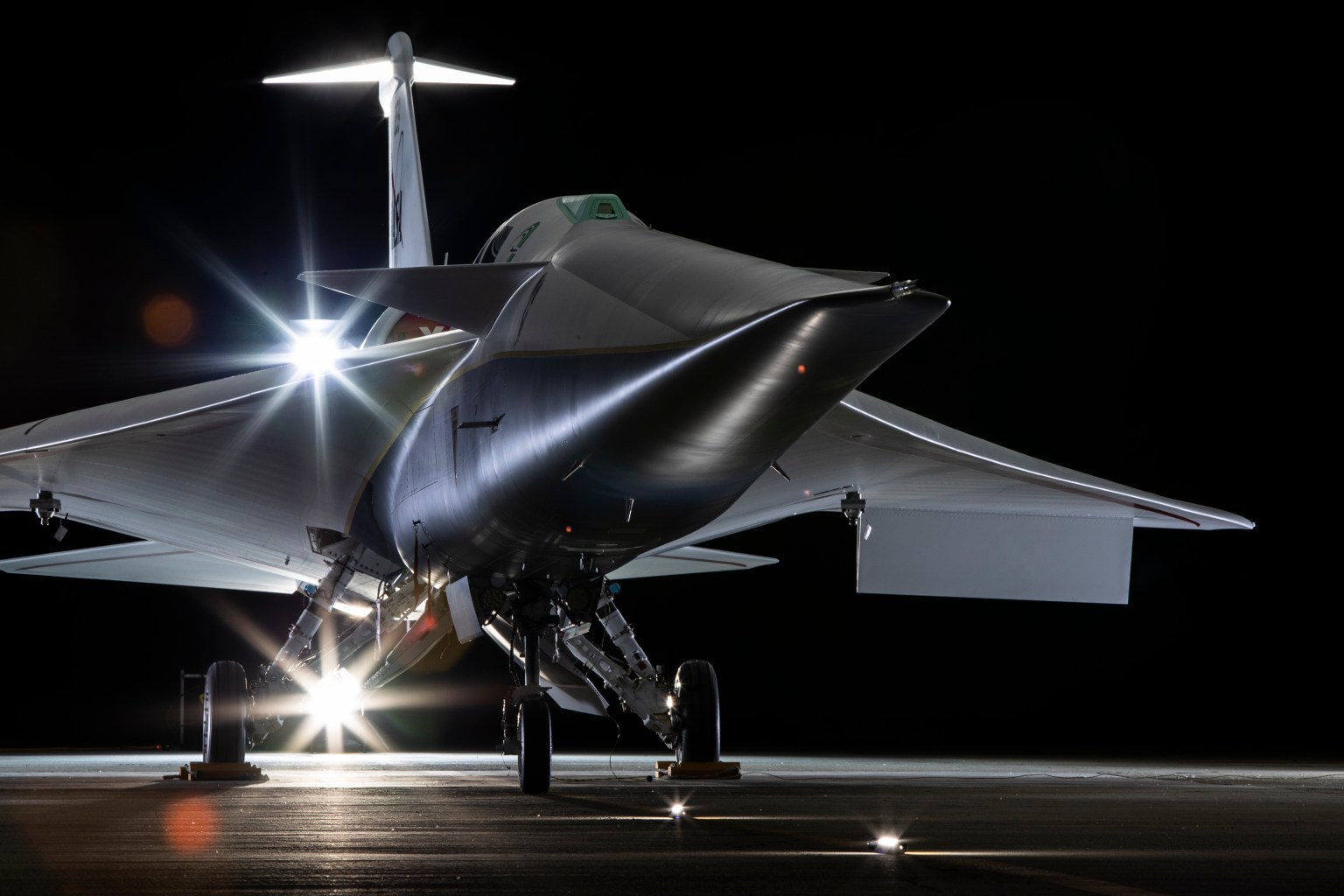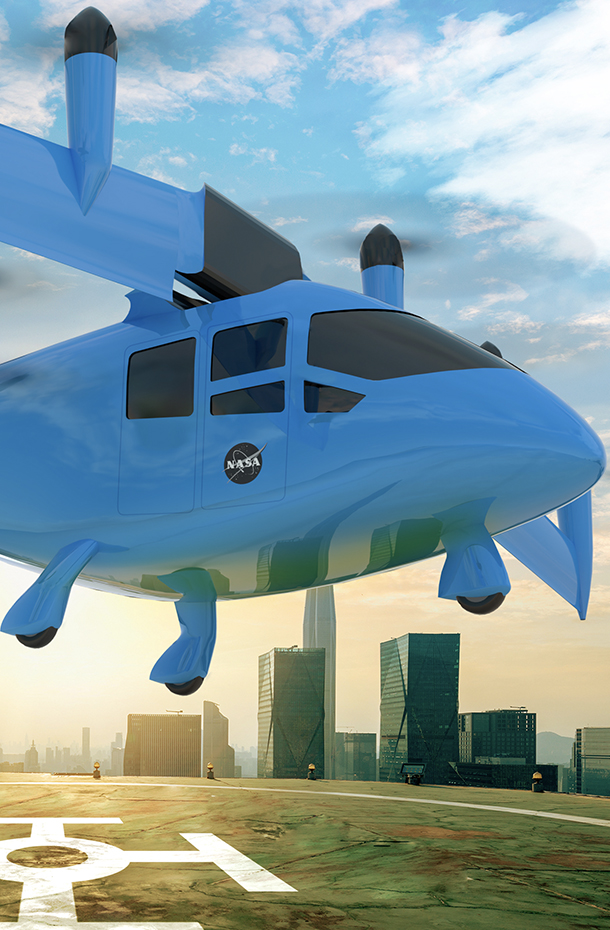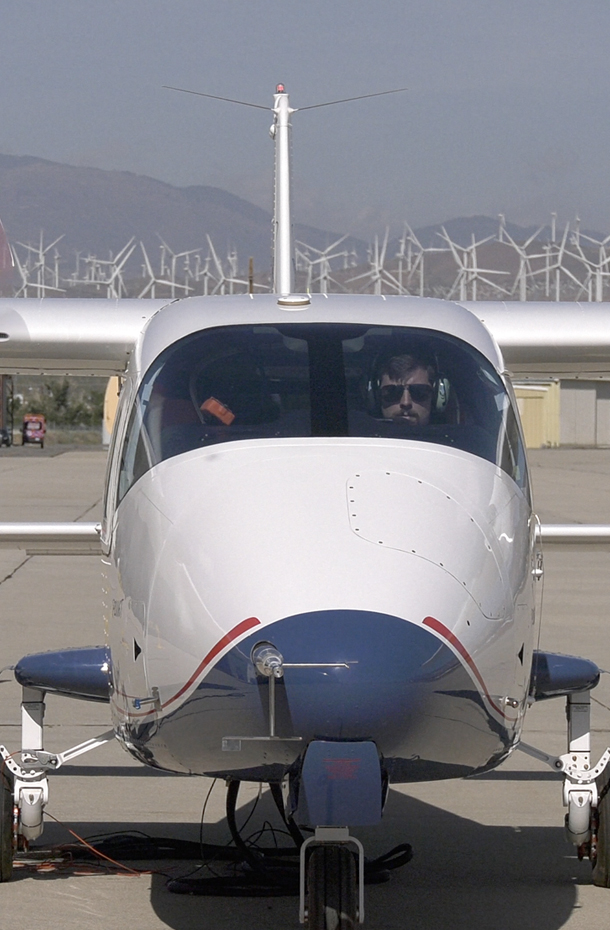LEGEND: ARMD NASA CENTERS
ARC = Ames Research Center
AFRC = Armstrong Flight Research Center
GRC = Glenn Research Center
HQ = Headquarters
LaRC = Langley Research Center
Technology and Innovation
Winner
Dr. Joseph Rios, ARC
Dr. Joseph Rios is recognized for his significant contributions as Chief Engineer of the Unmanned Airspace System (UAS) Traffic Management (UTM) subproject. Working to distill requirements with a multi-center NASA team, along with industry and other government partners, Dr. Rios has introduced cutting-edge methods to UTM software development and was the architect behind two major innovations: the Flight Information Management System and the UAS Service Suppliers. Moreover, his data exchange protocols and application protocol interface were delivered to the Federal Aviation Administration (FAA) and incorporated into the FAA’s Low Altitude Authorization and Notification Capability. Through Dr. Rios’ outstanding leadership and technical contributions, NASA has become a global leader in defining the future of UTM and other new concepts in airspace usage.
Winner (Group)
BLI2DTF Technology and Development Test Team, GRC
Boundary Layer Ingestion (BLI) is a promising solution for increasing fuel efficiency of subsonic aircraft. To research that potential, a NASA-led team executed an innovative wind-tunnel research program during the past few years. The BLI2DTF team — short for Boundary Layer Ingesting Inlet and Distortion-Tolerant Fan — had to design and build both the engine inlet and fan research hardware, and make modifications to the wind tunnel in which the new hardware was to be tested.. A total of 104 hours of test time was accumulated. The result: a significant contribution toward understanding the impact and benefit of BLI propulsors.
Team Lead: Mr. Dave Arend (GRC)
View Group Winners
Leadership and Management Excellence
Winner
Mr. Brian Baxley, LaRC
Mr. Brian Baxley played a key role in the success of the Air Traffic Management (ATM) Technology Demonstration (ATD-1) project as a principal investigator, the flight test lead, the technical team lead, and as a mentor. ATD-1 included technologies developed at both Langley Research Center and Ames Research Center, which required Mr. Baxley to seamlessly integrate testing of both technologies, as well as the different research cultures of the two centers. Mr. Baxley fostered an environment of collaboration and team excellence, and his efforts directly contributed to the success of the ATD-1 subproject.
Program and Mission Support
Winner (Individual)
Ms. Tammy Turner, GRC
Ms. Tammy Turner, Aerosciences Evaluation and Test Capability (AETC) portfolio’s Lead Business Analyst, has been instrumental in support of AETC’s transition to a New Funding Model (NFM) that involves the management support of resources from four mission directorates used across three NASA field centers to sustain the AETC portfolio of large wind tunnels. Ms. Turner’s contribution to the NFM’s success stems from her impact in three areas: multi-mission funding management, reimbursable revenue management and data systems needed for portfolio capability management, and NFM metric measurements. Ms. Turner’s mission support acumen ensured NASA’s first year of the NFM was a huge success.
Winner (Group)
SonicBAT Community Response Team, HQ
Led by Matt Kamlet of NASA’s Armstrong Research Center, the Sonic Booms in Atmospheric Turbulence (SonicBAT) research flights over Kennedy Space Center was a success thanks in large part to the community outreach activities planned and executed by this team. Months of preparation, coordination, and cooperation between public affairs officers, subject matter experts, and representatives from several NASA centers, as well as the Kennedy Space Center Visitor Complex, were required. Maintaining positive public perception of NASA’s supersonic research near multiple communities over an extended period of time was the primary objective, as project leadership was concerned that a high volume of negative community responses could threaten the flights. Despite technical and weather-related challenges, the test series went well and the SonicBAT communications plan has become a model for future public engagement related to supersonic research.
Team Lead: Mr. Matt Kamlet (AFRC)
View Group Winners
Strategic Partnerships
Winner
Mr. Jeffrey S. Robinson, LaRC
Mr. Robinson is being honored for his outstanding, ongoing role as NASA’s internationally recognized expert and authority on hypersonic vehicle design, and as the agency’s primary interface with external customers for NASA’s hypersonic systems analysis activities. Of note is his leadership of a team of NASA engineers who are working with the Defense Advanced Research Projects Agency. His work not only supports a multi-year effort in which NASA is partnered with the Department of Defense, but also contributes to advance and address the challenges of a civilian point-to-point hypersonic vehicle design.
High Potentials
Winner
Ms. Michelle Noreko Lynde, LaRC
Ms. Michelle Noreko Lynde joined NASA in May 2014 as a Pathways Student with Langley Research Center’s Configuration Aerodynamics Branch. In April 2015 she was hired as a full-time civil servant. Her research has focused on the development and application of a knowledge-based design system for natural laminar flow (NLF) on wings with moderate-to-high sweep. In less than three years, Ms. Lynde has demonstrated an amazing understanding of issues and processes involved in NLF analysis and design, made noteworthy technical contributions, displayed a very proactive attitude, and shown high potential for continued technical impact within NASA’s aeronautical research programs.
Smartest Failure
Winner
X-56 Project Team, AFRC
For this inaugural year honor, the X-56A Project Team at NASA’s Armstrong Research Center gets the nod. The X-56A is a smaller scale, unmanned aircraft designed to research innovative designs and methods for enabling overall weight reduction and improved efficiency in future aircraft. The project experienced two aircraft mishaps, one of which resulted in the loss of a vehicle. Originally a joint effort with the Air Force and industry, following the mishaps the NASA team continued to study the failures on its own, resulting in productive changes that allowed the remaining aircraft to fly again. The X-56A team is an excellent example of prudent risk-taking, learning from an unanticipated but not completely unexpected failure, and persevering while advancing the state of the discipline. Through their efforts, the members of this flight project team have become industry leaders in the modeling of highly coupled aircraft dynamics. Future aircraft with high-aspectratio-flexible-wings, or low-boom designs with long slender fuselages, will benefit from the knowledge gained by the X-56A flight research team.
TEAM LEAD: Cheng Moua (AFRC)
View Group Winners
ARMD Associate Administrator Award



























